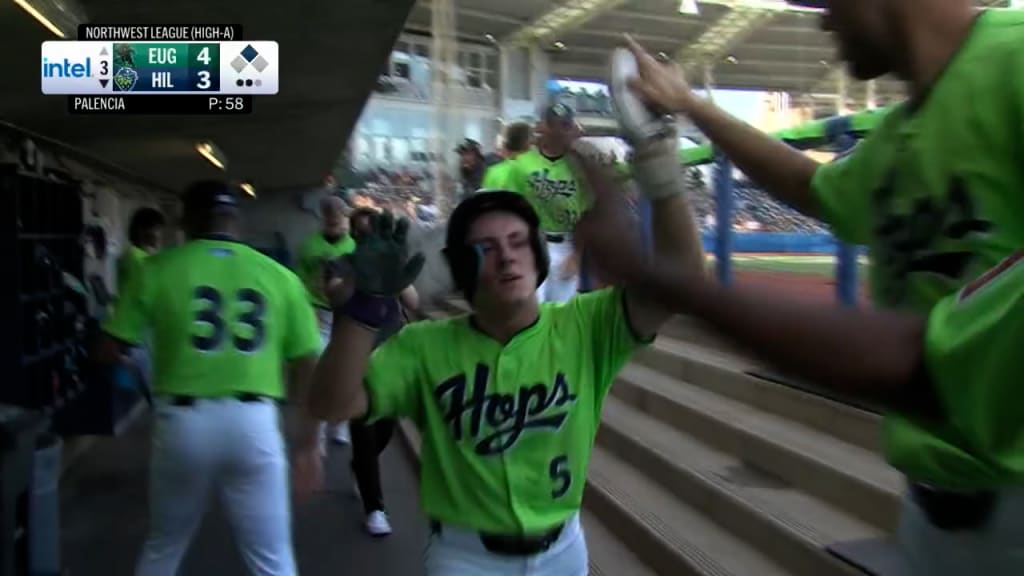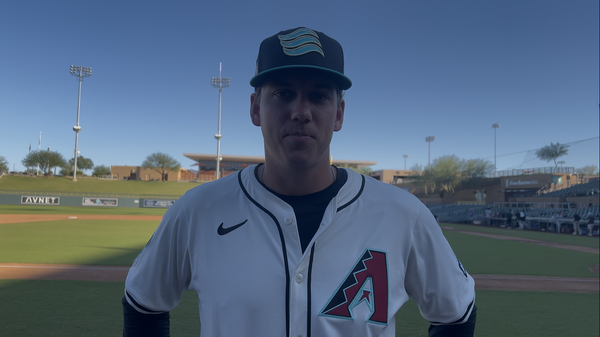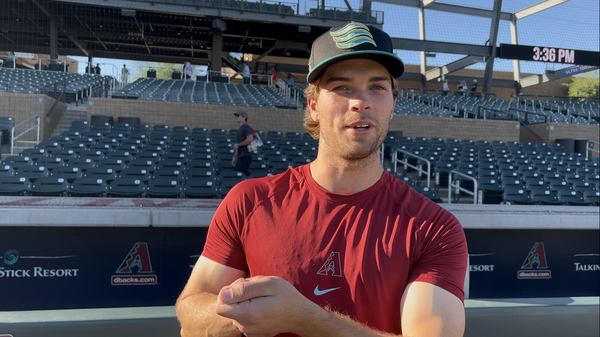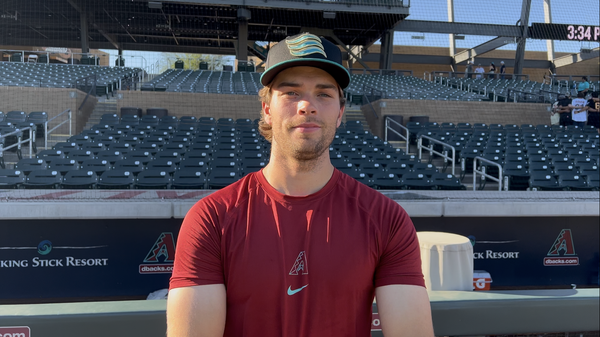How I Evaluate Prospects
A brief snapshot into what I think about the prospect industry and the stuff I use to evaluate prospects.

I’ve likely written hundreds of articles related to prospects in the Diamondbacks system for over a decade. That’s included Arizona Fall League coverage, prospect lists, and exclusive interviews. However, I’ve never explained my main criteria for evaluating prospects.
With the advent of fantasy baseball, something I refuse to take part in, the prospect industry has risen over the past 20 years. Baseball America, FanGraphs, MLB, and ESPN are at the forefront of this analysis. Three of those four sites, with FanGraphs as the exception, allow you to play Fantasy Baseball.
Me? I’m just some 31-year-old internet rando who was intrigued by the idea of prospect coverage and got my start about 10 years ago with AZ Snake Pit.
Sometimes crafting a prospect list feels like guessing. I don’t have nearly the full data or insights on these players that Eric Longenhagen, Kiley McDaniel, Jim Callis, Lance Brozdowski, and other prospect pundits have. I can only guess based on the limited data and insights I’ve developed in 10 years of writing.
I actually was once offered a spot on the broadcast to talk about prospects back in 2019, through a mutual connection with Jack, but I didn’t think I had the tone or know-how to make it an interesting segment, so I never responded. Of course now, they’ve filled that segment with Jesse Borek.
Pitchers
At the end of the day, it comes down to the pitcher’s ability to throw strikes and record outs. Hitting is about rhythm and timing, and pitching is about disrupting that. The game is naturally in favor of the pitcher, as the league-average hitter makes an out 68-70% of the time.
Things I want to see:
- Jumping ahead of counts (0-1, 0-2, 1-2)
- Ability to command the fastball in the strike zone
- Ability to effectively change speeds and locations (tunneling)
- Leveraging advantage counts (pitcher ahead of hitter) to entice the hitter to chase out of the strike zone
- Putting away hitters in 2-strike counts
These are different things Diamondbacks manager Torey Lovullo has mentioned that he wants to see from his pitchers. Again, prospects are all projection and how they might perform at the major league level. They’re in the minors for a reason, as organizations don’t think they have the necessary ingredients to be successful in MLB just yet.
Due to the limited public data on minor leaguers, I have to over-rely on what I have to put my best guess forward. Sometimes my instincts are correct, most of the time they’re not. Here are the stats I use to evaluate pitching prospects, which you can find on FanGraphs.
- K-BB% (strikeout rate minus walk rate, by percentage): Indicates an ability to finish off hitters and limit walks on a percentage basis. More effective stat than the more commonly-cited K/BB, which will naturally favor low-walk pitchers.
- First Pitch Strike%: Self-explanatory. Without establishing my own database, which requires mining through hundreds of game summaries, I can’t pull out 0-2 and 1-2 counts.
- Called Strike + Whiff% (CSW%): Indicates the percentage of pitches landing for called or swinging strikes. It’s a stat that potentially highlights solid sequencing to stay ahead of hitters. However, it doesn’t count no or 1-strike foul balls, which count the same.
- Swinging Strike%: Indicates an ability to miss bats. Usually it is the best referendum on stuff and how a pitcher uses it. However, it may knock a pitcher that relies on deception and working the edges of the zone for called strikes early in the count.
Notice that I’ve avoided run prevention metrics such as ERA, FIP, and xFIP, and their respective park-adjusted metrics (ERA-/FIP-,xFIP-). To me, traits will always translate to the next level more so than those three metrics. Pitchers get better at throwing strikes, and hitters get better at discerning and hitting strikes as you go up the system. However, the four metrics I posted above will translate to any level in professional baseball.
When we get to the Triple-A level, we have much more detailed pitch data through the Statcast search. We can get a better picture of how a pitcher is performing in specific counts, zones, and other aspects of the game. It’s a very useful tool to use if you develop the curiosity for it without getting too lost in the weeds.
D-backs Top 10 pitching prospects: RHP Cristian Mena, RHP Daniel Eagen, RHP Patrick Forbes, RHP Brian Curley, RHP Hayden Durke, RHP Dylan Ray, LHP Spencer Giesting, RHP Alfred Morillo, LHP Yu-Min Lin, RHP Yordin Chalas
Hitters
Things I want to see:
- Ability to discern balls and strikes (chase rate)
- Hitting strikes hard and preferably in the air (what controlling the zone means, essentially)
- Zone in on specific pitches in leveraged counts (0 or 1-strike) for the hitter.
- Ability to hit with two strikes (strikeout rate)
In terms of stats, this is what I would use to evaluate hitters.
- K% and BB%: I don’t think taking the difference is as important as it is for pitchers. A higher walk rate translates to a better on-base percentage and more runs scored.
- Ground Ball%: For the vast majority of hitters, a ground ball is an out. The MLB average on ground balls is .249 with a .273 slugging percentage. You want to see that number under 40% ideally.
- Swinging Strike%: The fewer strikes put into play, the less impact a batter has. For a power hitter (think Ivan Melendez), that means less of a chance of hitting home runs. For a hitter reliant on speed (Slade Caldwell), strikeouts mean the speed will never get a chance to play.
I use wRC+ a lot to determine hitting performance relative to the league and park environments, but I think what I listed above is more fundamental.
When we get to Triple-A, we can look at how they hit certain pitch types, chase rates, and contact rates. Not only that, but we can look at their exit velocities and their ability to impact the baseball. If you want one such example, I wrote an analysis on one of the newest Diamondbacks, Tristin English.
D-backs Top 10 Hitting Prospects: SS Jordan Lawlar, 3B LuJames Groover III, 2B Tommy Troy, OF Ryan Waldschmidt, OF Slade Caldwell, DH Adrian Del Castillo, 2B JD Dix, 2B Demetrio Crisantes, INF Jansel Luis, SS Kayson Cunningham
When we talk about using statistics to evaluate prospects, the biggest takeaway I want you to have from this is that every statistic has its own strengths and weaknesses. It’s important to understand what they’re saying and what they might not be able to measure. To me, that’s what separates a real analyst working in a major league organization or media publication from someone who does this as a hobby.



